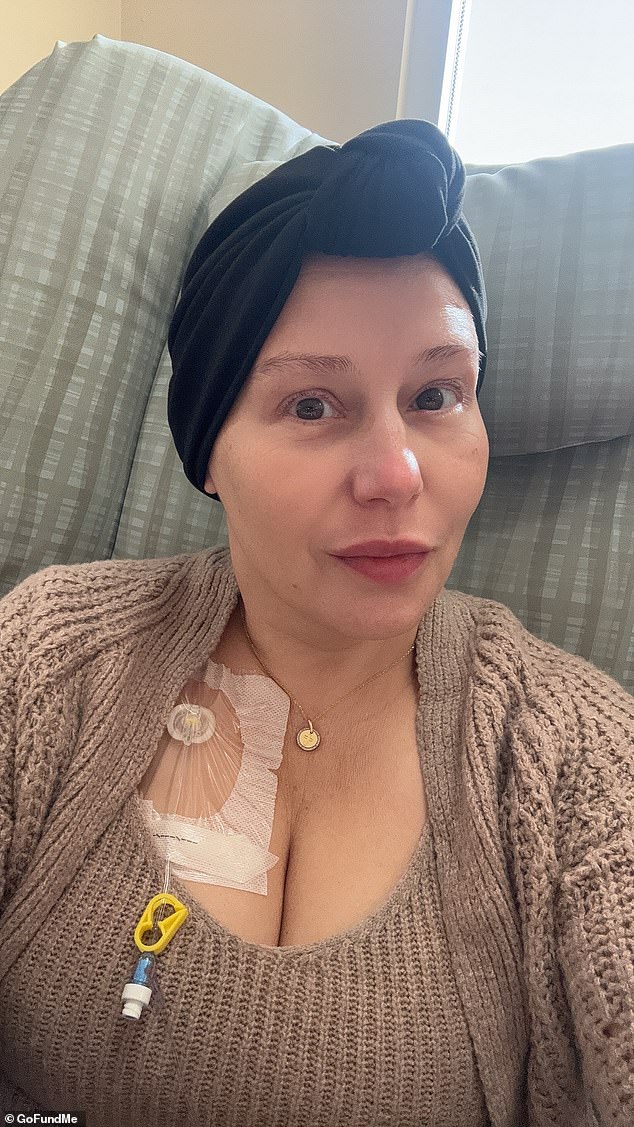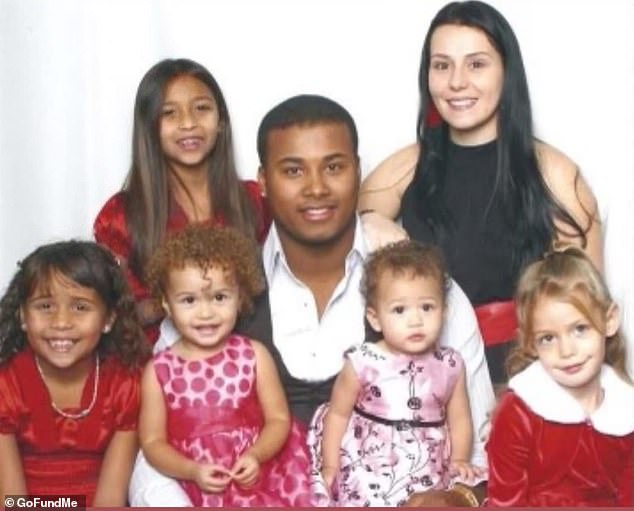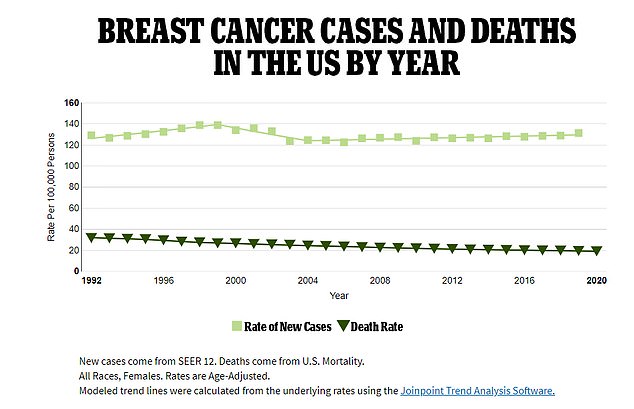Misty De La Cruz is battling an aggressive cancer, but that isn’t what’s devastating her.
The mother of eight was diagnosed with stage three triple-negative breast cancer in 2023. She sat down with her children and openly explained to them what her cancer diagnosis was and what it meant for the family going forward.
Since her diagnosis, De La Cruz, 43, has undergone weeks of chemotherapy treatments, surgeries with another to come, and has just begun immunotherapy.
People with this stage of triple-negative breast cancer have a five-year survival rate of up to 65 percent, but De La Cruz’s prognosis is far more dim, telling her followers on TikTok that she has a 20 percent chance of beating cancer.
De La Cruz typically records in one of two poses: lying down due to crippling fatigue that renders her bedbound some days, or driving to a doctor’s appointment, whether it’s to see a dermatologist from a facial rash due to chemo or the dentist to repair her decaying teeth.
The true toll her cancer diagnosis is taking on the family was highlighted last month when the Maryland resident received a phone call from her son’s school that broke her heart, she said.
The school nurse told her the boy, now 10, had been unusually tired during the day. When asked why, he mentioned said he was staying up most nights ‘because he thinks that while he’s asleep, I’m going to die,’ De La Cruz said.
‘There’s so much more to this process than just us battling cancer… It’s the fact that our kids are so traumatized,’ De La Cruz added.
‘As a parent you try to be strong for your children, but they watch you slowly change into someone completely different.

Misty De La Cruz, 43, was diagnosed with stage three triple-negative breast cancer in 2023 and was given a 20 percent chance of survival
‘He was crying, and the only thing he asked was if I was going to die. I tried to reassure him that the doctors were going to do the best that they could do to make sure that that didn’t happen. But ultimately, there is never a promise from anyone, but I was gonna fight as hard as I could.’
Two years ago, at 41, De La Cruz began experiencing pain in her right breast during her period, a pain, she told PEOPLE, that ‘felt a little bit different’ from standard breast pain many women experience during their cycles.
It persisted over several months until she went to see her gynecologist, who performed a standard mammogram and manual exam of her breasts.
Nothing looked suspicious, though her doctor noted that De La Cruz had dense breast tissue, which can make detecting nodules more difficult.
De La Cruz went about her life as a busy working mom but said she harbored a feeling of uncertainty. Doctors brushed off her concerns, citing the healthy-looking mammogram.
However, last summer, when doing her regular monthly manual breast exams, she found a pea-sized knot in her right breast that was not there the month before.
She was back in her doctor’s office within days and taken for another mammogram as well as an ultrasound, which can sometimes pick up on tumors hidden within dense breast tissue that a standard mammogram may miss.
Doctors rushed to perform a biopsy, ‘and within 48 hours, I had the results for that biopsy… and it came back for stage 2 triple-negative breast cancer.’

De La Cruz is pictured pre-diagnosis with her doctors. She said she did not begin to feel sick until she started chemo, which caused severe fatigue, brain fog, and nausea
But an oncologist soon informed her that the cancer was actually at stage 3 and had spread to her lymph nodes.
‘So we needed to start immediately,’ De La Cruz said. ‘It’s going to wreak havoc and spreads especially quicker now because I had the biopsy and the mammogram, because radiation and agitating the tumor causes it to go crazy.’
She began chemo within the week.
‘I still wasn’t sick,’ she added. ‘I really didn’t start getting sick until I started chemo,’ which causes nausea, exhaustion, hair loss, and a whole list of side effects that hit harder than the disease itself.
The ensuing chemotherapy treatments ravaged De La Cruz’s body, causing such severe vomiting that her teeth began to rot, lethargy that left her bound to the couch, a rash across her face, and constant brain fog.
Roughly 65 percent of women diagnosed with stage three triple negative breast cancer survive five years after their diagnosis. At this stage, the aggressive cancer has spread to the lymph nodes, six of which De La Cruz had surgically removed last month.
She recently learned that she carries a mutation on the BRCA2 gene that impedes the body’s ability to repair damaged DNA, allowing cells to accumulate damage and grow out of control, a hallmark of cancer.
Women with this mutation have a 45 to 69 percent chance of developing cancer, and De La Cruz now worries for her daughters.

The case rate of breast cancer among women as a rate per 100,000 people (light green squares) compared to the death rate shown by the green triangles . As death rates have plunged, case rates are still rising
At 43, De La Cruz is not your typical cancer patient. Breast cancer is most common in women over 50, with the highest rates occurring in women over 70.
Yet signs are pointing to a spike in breast cancer among younger women.
Radiologists affiliated with the American College of Radiology reported last year that new diagnoses of breast cancer in patients 20 to 39 rose by nearly three percent from 2004 to 2021, compared to just a 1.4 percent rise among women in their 70s.
They also found that cases in patients 40 to 74 increased by two percent per year from 2004 to 2012. But from 2018 to 2021, there was a 2.7 percent yearly increase.
Your browser does not support iframes.
Doctors have attributed rising levels of new advanced cancer diagnoses to federal guidelines that recommend mammograms starting at age 40.
Watching their mother fight cancer and the effects of chemo took a toll on her children.
She recounted a trip to the store with one of her sons who, while holding her hand, said he wished he had cancer instead of her.
Another time, one of her sons went to sit with her on the couch and would not let go of her arm.

Checking your breasts should be part of your monthly routine so you notice any unusual changes. Simply rub and feel from top to bottom, in semi-circles and in a circular motion around your breast tissue to identify any abnormalities
He cried, ‘Please don’t die, mom.’
‘I handle a lot of stuff that comes with my cancer,’ she said. ‘At the end of the day… I have to deal with the fact that they tell me I only have a 20 percent survival rate.’
De La Cruz underwent surgery to remove six lymph nodes to mitigate the spread of her cancer.
She will also undergo a double mastectomy, but can only do so after she finishes recovering from a breast reduction procedure.
She started a GoFundMe to help pay the exorbitant costs.
Despite her prognosis, De La Cruz tries to retain some type of normalcy for her children.
She said: ‘No matter how sick I am, every Sunday our family has a Sunday dinner. Usually, I’m the one to do all the cooking, but we’ve had to improvise.’
